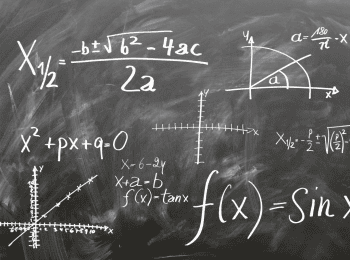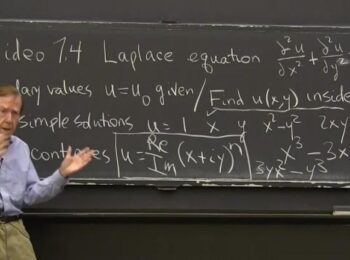If you take a physics course, there’s a good chance you will learn about the rotational inertia formula. Learn more about the formula and how knowing calculus can help you understand the formula better.
What Is The Rotational Inertia Formula?

image via: pxhere.com
Whether you’re currently enrolled in a physics class or will be taking one in the near future, you are likely to learn about rotational inertia and how to use the formula. Like in calculus, some people understand physics a little easier and better than others.
Even if you find physics to be a bit of a challenge, your knowledge and experience with calculus may actually be beneficial to working through various physics formulas. In our article, we’ll discuss how calculus can help you in physics, take a closer look at rotational inertia, and how to work through the rotational inertia formula.
What Is Rotational Inertia?
Before we take a look at its formula, it’s a good idea to take a closer look at rotational inertia. As you most likely
already know, the general definition of physics is the study of matter and energy and how they interact. Since physics is ever-changing, it is often a more complex topic than its seemingly simple definition.
Inertia describes a property of matter that remains at rest or in uniform motion unless changed by external force. Considering the definition of inertia, rotational inertia is best described as the measure of an object’s resistance to change during rotation.
Rotational inertia is also known as the moment of inertia or the second moment of mass. The second moment of mass refers to the length of the moment arm squared. The rotational inertia is the property of any object that has the ability to rotate.
Rotational inertia also has a scalar value, rather than a vector, which tells us how difficult it is to change the velocity of an object while in rotation.
Another thing that’s important to note about rotational inertia is that it is similar to mass in linear mechanics. The rotational inertia of an object greatly depends on the mass of the object, as well as the distribution of the mass in relation to the axis of rotation.
As the object moves further away from the axis of rotation, it’s harder to manipulate the rotational velocity. Why? The mass carries more momentum with it as it rotates, thanks to the increase of speed, as well as the momentum vector changing more quickly.
Before we jump into the rotational inertia formula, let’s take a look at rotational inertia in an everyday application.
Understanding Rotational Inertia In Everyday Life
It’s not uncommon to become easily overwhelmed or confused by the technical terms used in physics or calculus. Even if you consider yourself to be a “math-minded” person, it’s often more helpful to shift gears and take a look at a concept differently.
Since many concepts in physics are easier to understand in a real-world application, let’s break down rotational inertia in a “real world” sense.
Merry-Go-Round
Think of a merry-go-round (or a roundabout or carousel) on a playground; not the automated kind with animals at a carnival, but the type on a playground that children ride on. To get a merry-go-round started, someone needs to push the equipment. The harder the push, the faster it will accelerate.
A smaller merry-go-round will accelerate more quickly than a larger one, even if the same force of a push is used to start the equipment in motion. How does rotational inertia fit into this example?
Let’s say there are seven children on the merry-go-round. If the children are seated at the outer edge of the merry-go-round, it will be more challenging for the equipment to pick up speed, but if the same children move towards the center of the equipment (or the axis), it will accelerate more quickly.
The rotational inertia (or moment of inertia) is larger when the children are on the edge rather than closer to the axis; it’s important to note that the mass remains the same as well as the force used to rotate the merry-go-round.
Holding A Baseball Bat
If you have ever played softball or baseball, you may have experienced rotational inertia without even realizing. Anyone who’s ever held a bat knows that they aren’t all the same, as some are heavier than others.
Imagine only having the option to use the heaviest ball bat available. Depending on your strength and size, you might find it relatively easy or hard to use the bat. If you feel comfortable with the heavy bat, you’re likely to grip it on the handle (in the standard position) and have no problem hitting the ball with a strong force that accelerates it way into the outfield.
If you struggle with the weight of the bat, you can still hit the ball with the same force if you reposition your grip further up on the bat. Similar to what happens on the merry-go-round, repositioning your grip is decreasing the radius of the rotation, which will result in speed and force.
Something You Can Try At Home
As you begin to understand rotational inertia, you can probably think of more applications where this occurs. Here’s one more example that you can try at home.
If you have some sturdy cardboard on hand, cut out a circle with a 10 cm radius. Near the edge of the cardboard circle, write numbers 1 through 12, much like a clock face. Place a horizontal axis through its center and make sure your circle can spin freely; you may want to tack the circle to the wall using a nail or do something similar.
Place a lump of poster putty on the circle at number 3. If you don’t have poster putty on hand, you could try something like “silly putty,” but it may not stick as well. After you apply the putty to the circle, make sure that the circle is positioned so that the number 12 is at the top (like a clock).
Play around with the putty by adjusting the amount to see how much you need to make the circle spin in a full rotation. You may also try to move the putty closer to the axis to see how the speed and time are affected. While you probably won’t be keeping track of the weight of the putty, it’s a fun, hands-on experiment to try and gain a better understanding of rotational inertia.
Rotational Inertia Formula

image via: pixabay.com
Now that you have a better understanding of the basics of rotational inertia, it’s time to take a look at the formula. You may see the rotational inertia formula written a little differently, but here’s how we break it down.
Rotational inertia = mass x radius^2 or I = mr
As long as you keep the formula, I = mrin mind, and what it means, you should be able to solve problems with relative ease and a little practice.
The best way to test out this formula is by jumping right into a problem. Let’s consider another real-life application using another classic piece of playground equipment: a tetherball. If you’re unfamiliar with a tetherball, it has a simple design of a pole and a ball attached to a rope.
The object is to hit the ball and wrap the rope around the pole as many times as you can before another player blocks the motion and intercepts the play. Let’s assume that the ball is 3 kg and the pole is 4 meters away. What’s the rotational inertia? Keeping the formula in mind, we are multiplying the mass by the radius squared. Since we know that the mass of the ball is 3 kg and the radius is 4 meters, our equation will look like this:
I= 3 x 4
Since 4 meters squared is 16 meters times 3 kilograms, the rotational inertia will be 16 times 3, which equals 48 kilograms times meters squared.
Even though our example is pretty basic, you should have a better understanding of rotational inertia and its formula overall. As you learn more about rotational inertia, you’re likely to have more challenging and involved questions, but practicing with simple examples can help you keep the concept and the formula fresh in your mind.
How Does Calculus Help With Understanding The Rotational Inertia Formula?

Image Source : pixabay
Regardless of your experience in calculus or physics, you might be wondering how calculus can help you understand rotational inertia and its formula.
Newcomers to calculus and physics often don’t realize the strong connection to the two studies. As we already explained, physics is the study of matter and energy and how they change. Calculus analyzes things that change. Calculus allows you to take an up-close look at one part of a problem and use the math skills you already know.
You can undoubtedly succeed at physics without having knowledge of calculus, but even knowing the basic concepts of calculus may help you understand rotational inertia, its formula, and countless other formulas in physics.
The video may take a few seconds to load.Having trouble Viewing Video content? Some browsers do not support this version – Try a different browser.






